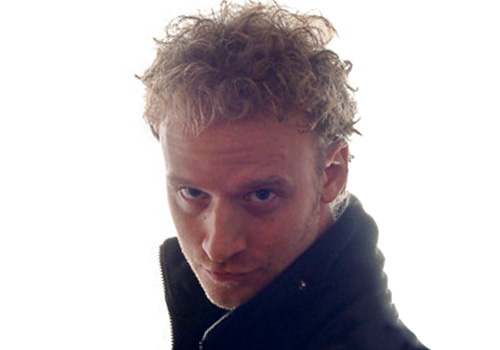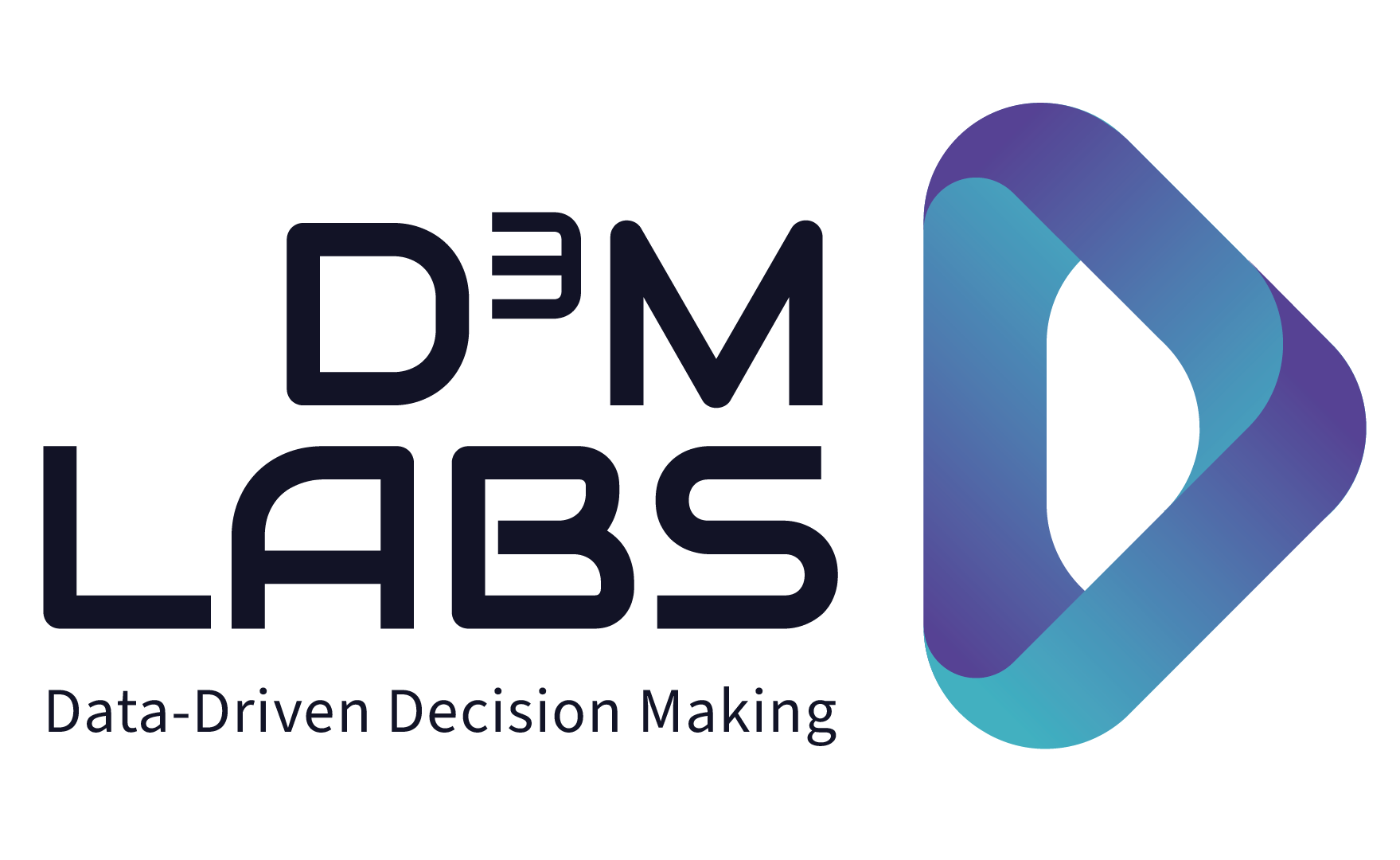What was your path to becoming an AI leader at B/S/H?
I started programming very early. I got my first computer as a gift when I was 12 and after a short time I also wanted to improve the hardware. My father was an electrical engineer and taught me to tinker with hardware.
Even as a child, I was fascinated by bionics. In particular, I wanted to understand how nature solved problems so elegantly and how we can mimic that with technology. I feel similarly about artificial intelligence (AI). I’ve always been fascinated by how humans and animals learn. We are very far from understanding that. As a child, I was inspired by Captain Picard and especially Commander Data, who embodied an android, that is, a highly intelligent machine in human form that aspired to become more human and also to be a friend to everyone.
I studied computer science and mathematics. Then, during college, I focused on „learning systems,“ what is now called ML/AI. A professor sparked the enthusiasm for AI. He managed to light the fire in us, his students. My thesis had as its focus the evolution of eye receptors using genetic algorithms.
I find BSH’s mission to improve people’s quality of life in their homes, including through smarter appliances, inspiring and can identify with it. Likewise with the demands for outstanding quality of the products.
What fascinates you about smart hardware and AI products embedded in hardware?
Devices can take on more complex tasks, although at the same time the operation becomes simpler.
The device understands people’s intention better. The old devices had many buttons, which did not require intelligence on the part of the device. Thanks to AI, people can increasingly communicate directly with smart devices and be understood, which greatly improves the user experience.
The increasing autonomy of devices and the ability to improve human-machine interfaces and thus operation.
For this to happen, the device itself must become smarter. It is important that computation is done at the edge, in the device , so that the device is not dependent on the data center. Otherwise, if the connection is interrupted or slow, users will not receive a response or the response will not be timely. This leads to a negative customer experience. Autonomy is very important. Autonomy means that these devices are independent of an external connection to computing capacity.
What are the biggest differences between the lifecycle management of a hardware product and a software product?
Planning in the traditional hardware business is much more complex and less agile.
A hardware product is sold and afterwards it cannot be changed. Dissatisfied customers can recall the devices, which involves money and damage to the company’s image.
With hardware, you can only incorporate feedback and improve the product for the next generation.
Software can be continuously improved. New functions can be added.
Feedback from customers can be received. If a customer is dissatisfied, then the function of a device can be improved and provided to customers even after the hardware has been sold.
What are the challenges in this change?
Rethinking, open-mindedness, adaptation of design and production processes.
Rethinking and open-mindedness are necessary. The design process is different. You have to be more of a visionary. The hardware has to be future-proof to allow for adaptations of the software and also enhancements through new functionalities. The adaptation of the design and production processes are very important.
Planning the hardware in advance in the context of expandability through new software functions. It is important, for example, to plan the computing and storage capacity of the hardware in such a way that software updates are possible. The hardware should therefore not be too restrictive.
Additional forms of support, beyond the hardware are necessary.
As a company, if the product has a problem, how do you help customers? Support for software products is different than for hardware products. Feedback can result in an improvement or bug fix to the software being developed and provided to the customer. Thus, the product can be enhanced even after the sale, increasing customer satisfaction. This leads to a positive perception of the brand by the customer. Processes must be created to receive and evaluate feedback. Updates to products that are already with customers must become possible. Processes must be created to make this possible. Many processes need to be adapted, which also requires high investments. Management must be able to assess which form of investment makes sense („high impact, low cost“).
Future-proofing today’s products.
How do I plan hardware so that future updates are possible. Hardware cannot be planned too tightly. Sometimes an update is not possible because the resources in the hardware are all used up.
What kind of organizational changes in product lifecycle management are required?
A team to support the software sold.
The team not only does troubleshooting, but evaluates the device and can develop new features.
Parallel streams need to be created that develop new devices.
In the support area, there needs to be a team that continues to support legacy product with software updates. Both need to run in parallel. I don’t have that with traditional hardware business.
With every new product, in extreme cases, I have a new team.
That’s a change in thinking. Before, you could work sequentially. Now, parallel development is necessary.
What changes in the mindset of corporate management are necessary?
The relationship between investments in old and new products
It is difficult for management to find the right balance between investments in old and new products. It is about optimizing the market share of different products. Updates of old products have a positive impact on long-term customer loyalty, but the incentive to buy new products can then decrease. So a balance has to be found.
Data suddenly becomes an asset for the company
Data products have a different business model. I have to think about how to add value to data. How do I invest when the time horizon to return on investment with data is longer? Collecting data in the traditional hardware business is shorter. With AI, I have more opportunities to collect data. You have to remember that collecting data has a different value. Some sensors have a higher cost, but they give me better training data. If a sensor costs 10 cents more, it may still be worth installing the more expensive sensor if it generates better quality data whose added value exceeds its additional cost in the medium to long term. So I have to think more long-term. I have to think about the improvement potential of products of the next generation, or the next three or four generations.
To paraphrase Einstein: The same mindset that brought you here won’t bring you to the next level.
What advice do you have for Data Practitioners and Managers going through this journey?
Data Practitioners
Companies should have at least one senior person who has been where the company wants to go, i.e. has had the necessary experience and knows the way to get there. This person should be more of a generalist. He or she doesn’t have to be the best programmer, Data Scientist or ML Engineer, but this person needs to have deep and broad experience to see the big picture. In addition, he or she should be able to communicate very well.
Process knowledge and technical knowledge through their own experience is very important and the ability to inspire other people is very important. This person must be able to hire and train Juniors. The enthusiasm must also be there. This person must also be able to inspire others and explain why the transformation is necessary.
The people who have 20 years of experience in the traditional hardware business have done a lot right. The technology has only evolved. You can’t be disrespectful. These people have a lot of knowledge.
It’s important for that person to communicate with very experienced professionals in traditional hardware and make it clear to them that they have not become obsolete, but they need additional development. The experienced professionals need to stay and be engaged.
Managers:
Managers need open-mindedness. They need to think, „We’re hiring these seniors. They’re seasoned experts. They’ve done the journey. They’re a guide to get us to where we’re going.“ If they’re not open-minded, then it doesn’t work.
The trust between management and senior has to be there.
What are some of your secrets to success?
Persistence and staying power, coupled with the positive attitude of a visionary or pioneering spirit. Unfortunately, in many companies you have to stubbornly run into concrete walls until they start to show cracks and then gradually collapse.
Don’t get too infected by the limited and often negative beliefs of others. My motto: „Impossible is just another word for lack of imagination“. One hears the assessment that something is „impossible“ very often in large as well as in small companies.
Many years of experience in IT have shown me that this assessment is usually wrong and says more about the lack of courage and imagination of the person than about the actual difficulty of the problem to be solved.
“The graveyard is the richest place on earth, because it is here that you will find all the hopes and dreams that were never fulfilled, the books that were never written, the songs that were never sung, the inventions that were never shared, the cures that were never discovered, all because someone was too afraid to take that first step, keep with the problem, or determined to carry our their dream.” — Les Brown
Who is Eric JoAchim Liese?

After receiving his Degree In Mathematics and Computer Science with focus on Machine Learning and AI, Eric worked as a Senior Data Scientist, ML Engineer and Consultant for several years. He designed concepts to automate the development of AI products by creating End-to-End MLOps Pipelines, as well as strategies to help companies to become data- and AI-driven. Before that, he worked as a Software Engineer for over a decade and later as a Lead Developer on many projects.
Eric is currently a Lead Architect & Advisor for AI & Data, helping BSH Home Appliances (a daughter company of Bosch), to shape a strategy to become a data and AI driven company. His responsibilities also encompass designing Data Lakes of BSH, with his main focus on concepts for automating data ingestion, ETL, data quality and productionization of ML/AI processes (MLOps) on AWS.
Related content
The prevelance of AI and the importance of engaging in dialogue
Beyond AI, the realities of operationalizing AI – A podcast interview with Elizabeth Press
Why the public needs to know more about AI – An interview with Varsh Anilkumar
